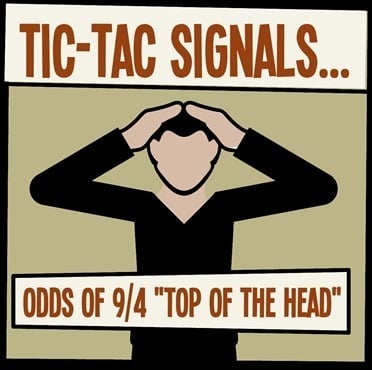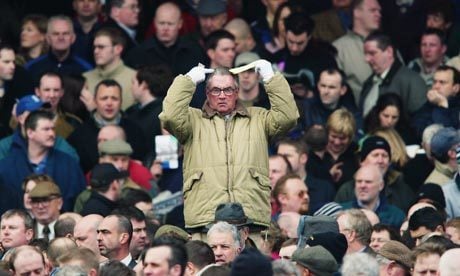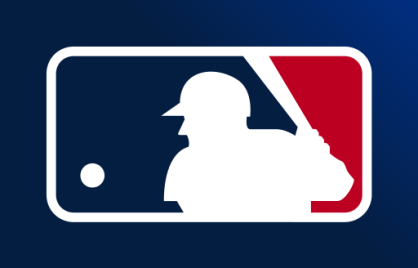Horse Racing Bookie Hand Signs Explained
Summarize this post

If you’ve ever watched horse racing on the television or been to the track in person, you may have seen the strange arm-waving antics of certain bookmakers and probably wondered what on earth they were doing.
Often these men are stood on raised platforms to be seen, with their hands and arms motioning a signal that nobody seems to understand. What they’re doing is the job of a ‘Tic-tac,’ and on this page we’re going to tell you why they do it and show you how’s it done.
What are the Origins of Tic-Tac Men? Why do Bookmakers use Them?
Tic-tac men were once a common sight at racetracks in the UK and considered entertainers in their own right. Their system of hand signals is designed for effective communication between both bookmakers, their colleagues, and also between rival bookmakers at the races.
These signals are intended as a secret language that bookmakers can speak without giving away information to the punters. It’s also a way of speaking above the rowdy crowds. When you consider the noise at the races, using hand signals is far more effective than trying to shout.
Tic-tacs most famously use hand signals to communicate betting odds for horses about to race. This allows for consistency across the board and avoids a situation where one bookmaker has substantially higher odds on offer for a particular horse, thus attracting a big amount of money and risking a big loss. A Tic-tac man can react to a huge bet coming in by communicating to his team and other bookies. Tic-tac men also play a part in actioning trades between rival bookmakers.
Do Bookmakers Still use Tic-Tac Men?
Much as everybody loves the theatre and entertainment value of multiple Tic-tacs in action, sadly it’s a dying art. Tic-tac men are a rare sight these days, thanks to the introduction of online betting, ease of mobile communication and the capacity for mobile devices to update real-time odds as they fluctuate. You’ll still see the odd Tic-tac, keeping the tradition alive, but the days of watching arms waving all over the place are gone.
Who are the Most Famous Tic-Tac Men?
The racing journalist, pundit, and TV presenter, John McCririck is probably the best-known Tic-tac of recent times. McCririck’s eccentricity was reinforced by his using hand signals on live television broadcasts as he laid out odds to the watching audience. McCririck once said of Tic-tac signaling: “I think it adds color. It brings the excitement of being at the racecourse.”
Bookie Signs for Odds
Here are instructions for executing some of the most common odds signs you’ll see from a Tic-tac, together with a selection of images to illustrate the hand movements required.
Odds – Evens
Hand signal – Stick out your forefingers on either hand, to form a pointing sign outwards, then hold out your arms and move them up and down. As one hand goes up, the other goes down.
Odds – 11/10
Hand signal – With this one you hold the palms of your hands open and have your outstretched fingers meet out in front of you.
Odds – 5/4
Hand signal – Place your right hand on top of your left wrist.
Odds – 11/8
Hand signal – Right hand slides up your left arm.

Odds – 6-4
Hand signal – Take your right hand and put it behind your left ear.

Odds – 13/8
Hand signal – Start with your 6-4 signal, then add a move where you bring your outstretched fingers to touch in front of you.
Odds – 7/4
Hand signal – Move your right hand over to your left shoulder.
Odds – 2/1
Hand signal – Take your right hand and bring it up to your nose.
Odds – 9/4
Hand signal – Place both hands on top of your head.

Odds – 5/2
Hand signal – Your hands come up to your face and finish by framing your nose.
Odds – 11/4
Hand signal – Take your 5/2 movement and add the action that brings your fingertips together afterwards.
Odds – 3/1
Hand signal – Turn your hands over and raise them both up to your chin.
Odds – 9/2
Hand signal – Place both hands on your shoulders.
Odds – 5/1
Hand signal – Raise your right hand and place it upon the same shoulder.
Odds – 6/1
Hand signal – Take your 5/1 action, then follow it with a tap upon your head.
Odds – 7/1
Hand signal – Take your 5/1 action, then follow it with a tap upon your nose.
Odds – 8/1
Hand signal – Take your 5/1 action, then follow it with a tap upon your chin.
Odds – 9/1
Hand signal – This is a good one. You’re going to have your right arm out, with your left on top of your head.
Odds – 10-1
Hand signal – Hands clenched, brought together as if punching each other

Odds – 16-1
Hand signal – Fists punch, then right hand touches right shoulder, then right hand goes to top of head.
Odds – 33-1
Hand signal – Bring your hands across your chest.
Slang Terms and Tic-Tac Men
Over time, some of the Tic-tac signals have gained slang terms to along with the hand gestures.

Here’s a sample of Tic-tac slang, courtesy of well-known glove wearer Barry Dennis.
Odds – Evens
Slang – Straight up, Scotch, Levels you devils, Major Stevens
Odds – 11/10
Slang – Wrist
Odds – 5/4
Slang – Tips
Odds – 11/8
Slang – Up the arm
Odds – 6/4
Slang – Ear’ole, Ear to rouf
Odds – 13/8
Slang – Unlucky, Bits of the ear’ole
Odds – 7/4
Slang – Shoulder, Neves
Odds – 15/8
Slang – Double tap
Odds – 2/1
Slang – Bottle, Bice
Odds – 9/4
Slang – Top of the head
Odds – 5/2
Slang – Face, Bice n’alf
Odds – 11/4
Slang – Elef a vier
Odds – 3/1
Slang – Carpet
Odds – 100/30
Slang – Burlington Bertie, Scruffy and dirty
Odds – 7/2
Slang – Carpet and half
Odds – 4/1
Slang – Rouf
Tic-Tac Counting Signals
Tic-tac men also have a language for simple counting purposes. This allows the bookmaker to communicate the number of the horse they are referring to.
We’ve provided instructions on how to count from one to ten using horse racing bookie signs, as follows:
1 – Take two fingers and place upon your forehead.
2 – Take the same fingers and tap them upon your nose.
3 – This time the two fingers are tapped upon your chin.
4 – This is a flick motion using the two fingers, as if drawing a smile away from your body.
5 – Take your left hand and place it upon the same shoulder.
6 – Now we’re going to combine signals to get the desired number. So six is your five sign followed by your one signal. A hand on the shoulder, then two fingers on the forehead.
7 – Five plus two gets you to seven, being the shoulder tap and then two fingers on your nose.
8 – Getting easy now. Five plus three gets you to eight.
9 – Take one finger and place it on top of your head for nine.
10 – Bring two clenched fists together in front to signal ten.
Tic-tac men are a great racing tradition. Their signals are designed to keep the bookmaker one step ahead of the punters, and we should all be hoping the art of bookie signs is kept alive in the years to come.


